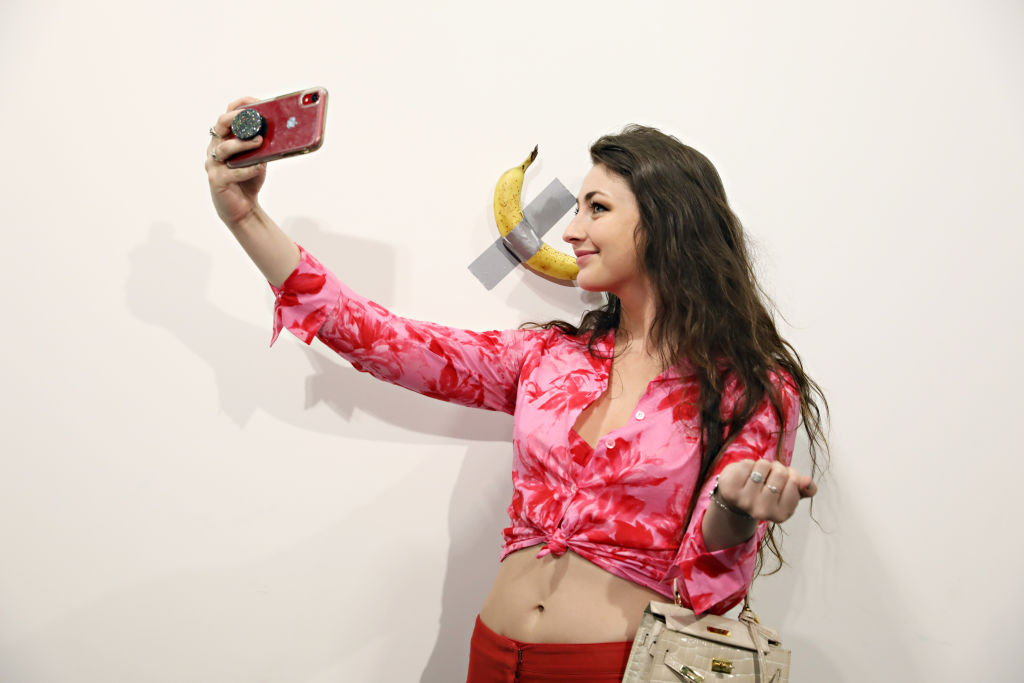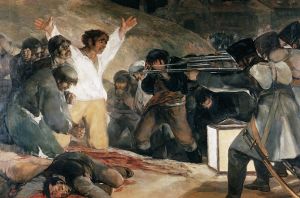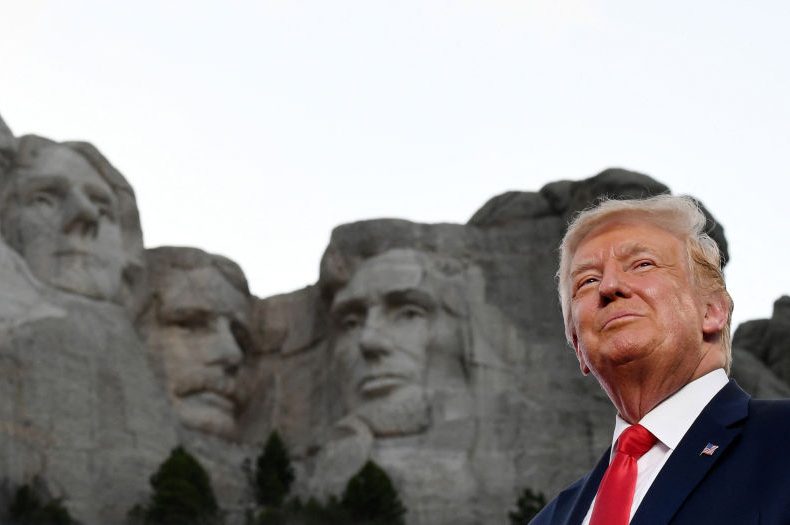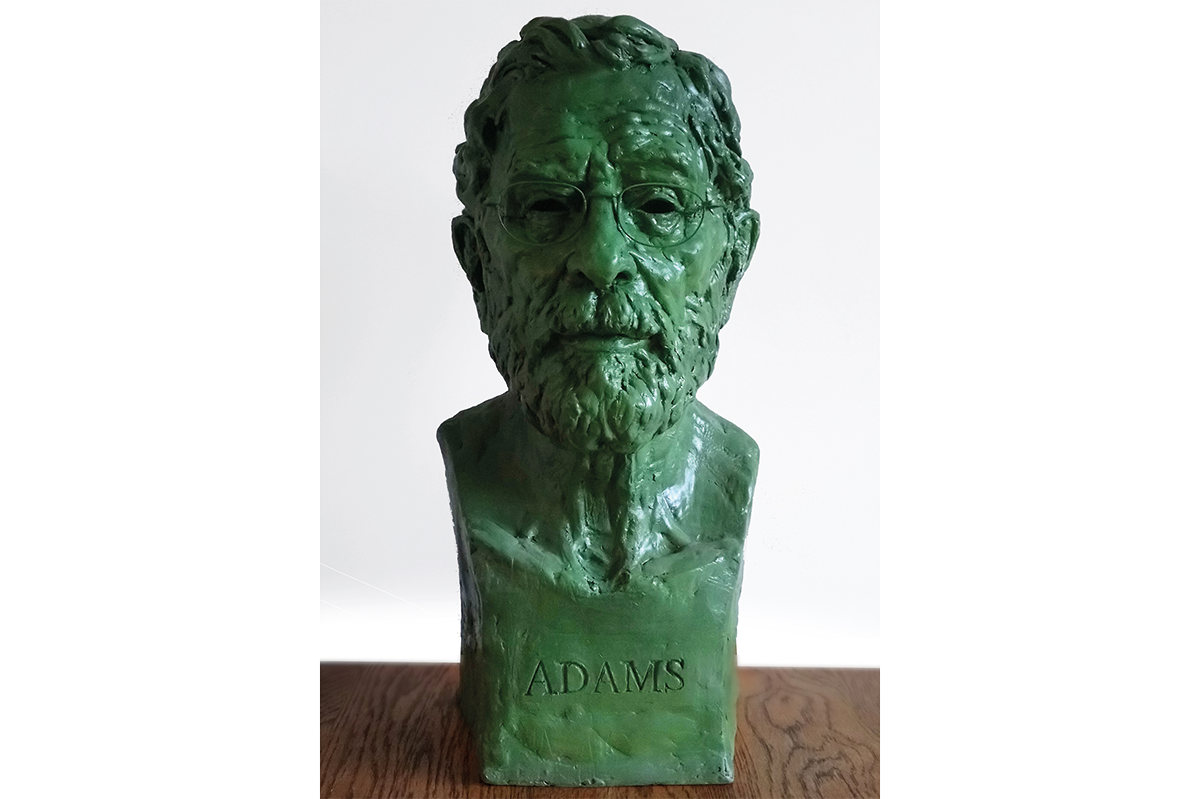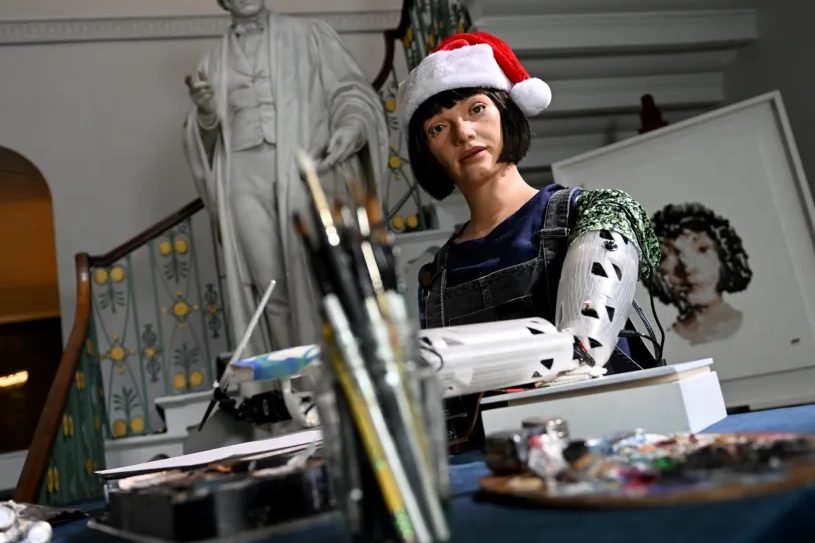This article is in The Spectator’s January 2020 US edition. Subscribe here.
Laramie, Wyoming
‘It’s pretty, but is it art?’ Rudyard Kipling asked in 1890. In those days the modernist movement across the Beaux Arts was gaining a grip on the western world that it maintains in the 21st century and is likely to hold into the 22nd, if there is one. One hundred and thirty years later, Kipling’s question calls for a plain response: ‘If it’s ugly, it has to be art.’
Aquinas defined art as ‘right reason in action’; reason in making. Right reason depends upon a man’s knowing what he ought to believe, desire and do. The modern artist is ignorant of all of these things. The result is what Mencken called ‘the Libido for the Ugly’. He was referring specifically to the appalling spectacle of American architecture in the industrial age, but the poverty and wretchedness of a civilization’s aesthetics — supposedly its superficial aspect — reflect in fact the ugliness of its metaphysical foundations.
Mencken recognized this truth when he referred in conclusion to ‘a race which hates beauty as it hates truth’. The libido for the ugly is modern man’s desire for the deformed, the perverted, the perverse, the meretricious and the plain wrong — the objects, values, thoughts, feelings and ideas that fascinate, beguile and seduce him through superficiality, glitter and falsity. Bad art always comes from bad metaphysics. ‘Make it new,’ was Ezra Pound’s artistic maxim. ‘Make it true’ is, rather, the rule which makes possible great art — art that is beautiful.
The western arts reflect the four stages of the western artist across three millennia: the artist as philosopher of sorts, the artist as handmaiden of religion, the artist as secular priest and, art having replaced religion in the 20th century as the highest of spiritual aspirations, the artist as political activist. Today he is a revolutionary in all things — art, politics, society and philosophical anthropology. The postmodern artist is a thoroughgoing secularist, a relativist and, finally, a spiritual nihilist. He lives for novelty, believes in the dialectical certainty of the revolutionary project and demands total and unlimited freedom in every sphere of human life save for the economic one.
Yet the contemporary artist is also the biological product of a postmodern, affluent, bourgeois family, and the cultural and intellectual creation of an affluent bourgeois university. As such, he has been raised and trained to value celebrity and economic affluence above all else. He wants these things as his birthright, without having to study or work hard to get them. Above all, he doesn’t expect to have to suffer for what he calls his art. Away with the garret beneath the broken skylight! Away with the coldwater flat! Commercialism and ideology will do the trick, along with carefully cultivated eccentricity and calculated shock and outrage. Attention-getting is the beginning and the end of his game.
Having little or no artistic talent, the contemporary artist favors what is easily done and seeks rapid recognition. He has no intention of contracting for an apprenticeship and learning the basic skills and techniques of his chosen art form by sitting at the feet of genuine masters. He is content to imitate the bad models he has been offered by sterile academics in philistine schools. The result is that most writers today cannot actually write, most painters cannot paint, most musicians cannot compose and most sculptors cannot sculpt.
Because modern painters and sculptors are unable to paint an accurate or even plausible representation of the physical world and its elements, they resort in the first instance to producing ‘personal statements’ of their highly eccentric, ill-founded and preposterous philosophical notions and aesthetic theories. The resulting fraud they pass off on an ignorant and demoralized public as works of ‘conceptual art’ or another of the various schools categorized in a series of intellectually pretentious or pseudoscientific names. In the second case, they substitute for the lovely world of reality a hideously deformed or unformed alternative whose inhuman and unnatural hideousness is predetermined by intention or execution or both. The finished work is a botch that degrades not only the preening artiste but also his subject and his subject’s Maker.
Turn now to modern composers. One must, I suppose, look almost with gratitude toward John Cage, whose scores are totally blank for pages and pages save for the rest marks, his audience being invited to fill the intervening measures with music of its own inadvertent composition. The crackle of candy wrappers crushed between fingers serves as counterpoint to the frictional rustle of trousered bottoms against seat cushions as a few hundred people squirm from boredom, puzzlement and the itch to get the cost of their tickets back on their way out of the concert hall.
Modern architecture suffers not merely from all these and similar problems but from additional peculiar ones as well, owing to the architect’s radical resentment of the economic, material and human limitations imposed upon him and his contemplated masterpiece. The industrial, and the incipient post-industrial, age combine to complicate his genius almost beyond the limits of human endurance. The industrial system has been, as Chesterton observed, a good deal too successful in its ambition to invent and produce labor-saving devices. These have succeeded in putting skillful and independent craftsmen in thousands of trades out of business and out of work, while replacing their aesthetically pleasing but also solid, sturdy and well-made wares and products with ugly machine-made approximations having the durability of mayflies on a summer afternoon.
As in no other fine art, the absence of skilled artisans fatally handicaps and restricts the modern architect’s artistic and intellectual scope. There is no longer anyone at hand to carve the stone angel destined to be affixed to the church spire 250 feet above ground, even if the builders, construction teams and technicians necessary for the erection of another Chartres existed. The buildings of today are built by machines, one vast prefabricated section at a time, according to the convenience of machines and finally for their use. Thus contemporary architects, like painters and artists, are mainly conceptualists as well as utilitarian minimalists. Unlike them, however, the choice to be anything else is not theirs. As a result, few habitations fit for human life, work and aesthetic contemplation are constructed nowadays, as indeed they have not been for a century and more.
Although old Ezra doubtless had good intentions, he might as well have enjoined future artists: ‘Make it unnatural, make it untrue and make it as ugly as you like.’
This article is in The Spectator’s January 2020 US edition. Subscribe here.



